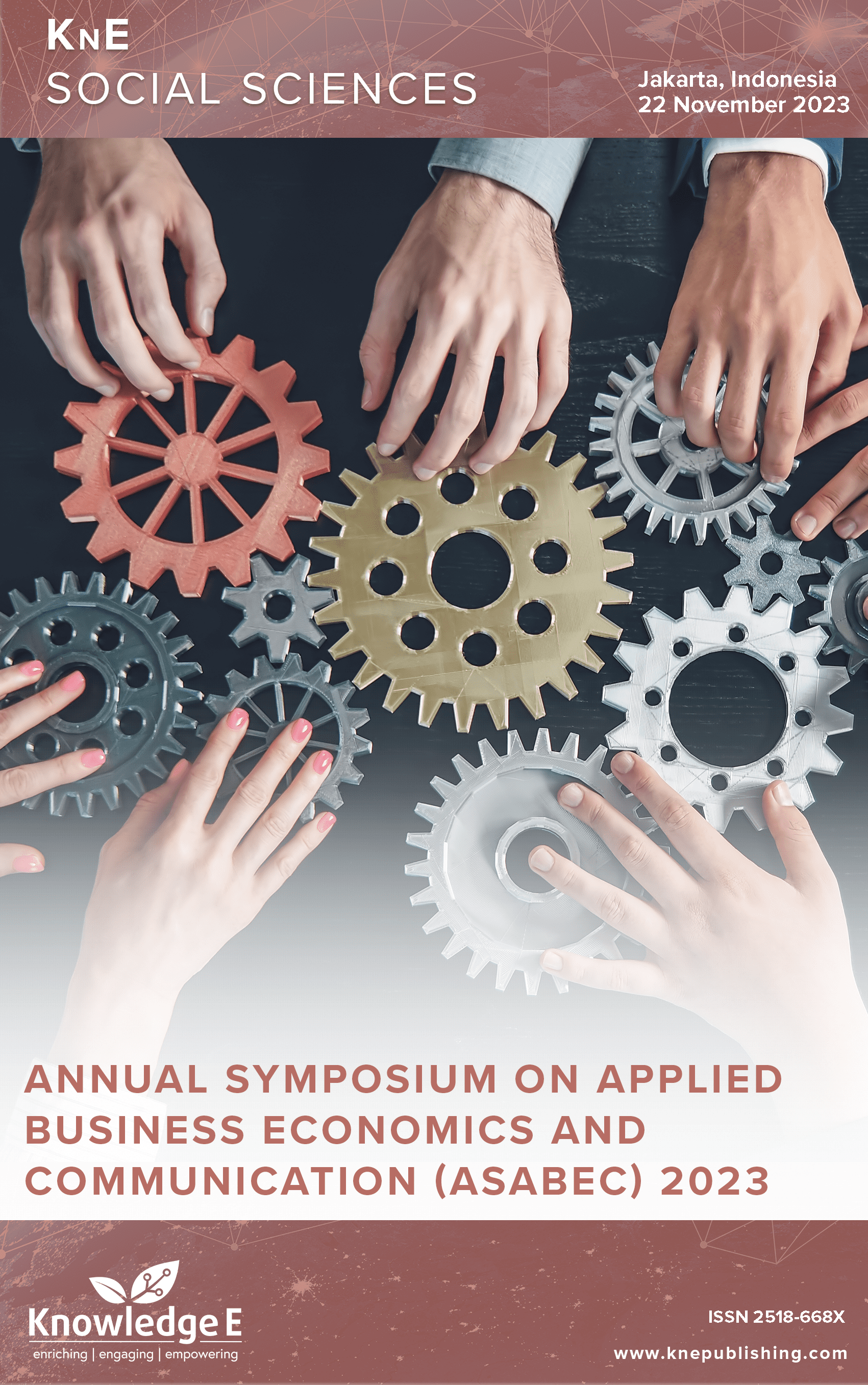The Influence of Mental Budgeting on the Decision to Buy Share by Millenials
DOI:
https://doi.org/10.18502/kss.v9i25.16947Abstract
Abstract. The trend of stock investment has recently gained popularity among the public, especially the millennial generation. People are interested in investing in the stock market due to its potential for high returns and passive income. However, stock investment also entails decision-making risks. Investor mental budgeting is one of the factors influencing stock purchase decisions. This behavior leads investors to categorize their investment portfolios, such as for retirement or general investment. Previous research empirically established that mental budgeting impacts investor decisions. Employing quantitative methods, this study collected primary data through questionnaires from 119 respondents categorized as millennials. The analysis employed partial least squares-structural equation modeling (SEM-PLS) and SmartPLS software version 3. The results indicated that earmarking and labeling of income and downside and upside protection significantly influence stock purchase decisions in the millennial generation. Consequently, millennials are advised to adopt a mental budgeting approach when making investment decisions.
Keywords: decision investment, downside and upside protection, earmarking and labeling of income, mental budgeting, purchase decision
References
Kőszegi B, Matějka F. Choice simplification: A theory of mental budgeting and naive diversification*. Q J Econ. 2020 Jan;135(2):1153–207. DOI: https://doi.org/10.1093/qje/qjz043
Xiao JJ, O’Neill B. Mental accounting and behavioural hierarchy: understanding consumer budgeting behaviour. Int J Consum Stud. 2018 Jul;42(4):448–59. DOI: https://doi.org/10.1111/ijcs.12445
Elgeka HW, Ma J, Secapramana LV, Yudiarso A. Money attitude and conscientiousness influence mental budgeting: A comparative study between Indonesia and China. Psychologia. 2018;61(1):26–36. DOI: https://doi.org/10.2117/psysoc.2019-A004
Hoque MZ. Mental budgeting and the financial management of small and medium entrepreneurs. Cogent Econ Finance. 2017 Jan;5(1):1291474. DOI: https://doi.org/10.1080/23322039.2017.1291474
Zhang CY, Sussman AB, Wang-Ly N, Lyu JK. How consumers budget. J Econ Behav Organ. 2022 Dec;204:69–88. DOI: https://doi.org/10.1016/j.jebo.2022.09.025
Nofsinger JR. The Psychology of Investing. Routledge; 2017. https://doi.org/10.4324/9781315230856. DOI: https://doi.org/10.4324/9781315230856
Hayes A, O’Brien R. Earmarking risk: Relational investing and portfolio choice. Soc Forces. 2020 Apr;soaa025. https://doi.org/10.1093/sf/soaa025. DOI: https://doi.org/10.1093/sf/soaa025
Groot R. The role of mental budgeting. Healthy financial behavior: A survey among self-employed entrepreneurs. Research In Agricultural & Applied Economics Digital Library; 2016. pp. 15–26. DOI: https://doi.org/10.19041/APSTRACT/2016/2-3/2
Krewski D, Saunders-Hastings P, Larkin P, Westphal M, Tyshenko MG, Leiss W, et al. Principles of risk decision-making. J Toxicol Environ Health B Crit Rev. 2022 Jul;25(5):250–78. DOI: https://doi.org/10.1080/10937404.2022.2107591
Buffett W, Cunningham LA. The essays of Warren Buffett : Lessons for corporate America. 2017. 307 pp.
Ang A, Chen J, Xing Y. Downside risk. 2005. https://doi.org/10.3386/w11824. DOI: https://doi.org/10.3386/w11824
Happersberger D, Lohre H, Nolte I. Estimating portfolio risk for tail risk protection strategies. Eur Financ Manag. 2020 Sep;26(4):1107–46. DOI: https://doi.org/10.1111/eufm.12256
Gao Y, Hoepner AG, Prokopczuk M, Wuersig C. Responsible investing: Upside potential and downside protection? SSRN Electronic Journal; 2022. https://doi.org/10.2139/ssrn.4049811. DOI: https://doi.org/10.2139/ssrn.4049811
Zhang CY, Sussman AB. The role of mental accounting in household spending and investing decisions. 2017. DOI: https://doi.org/10.1002/9781119440895.ch6
Sussman AB, O’Brien RL. Knowing when to spend: Unintended financial consequences of earmarking to encourage savings. J Mark Res. 2016 Oct;53(5):790–803. DOI: https://doi.org/10.1509/jmr.14.0455
Palanisamy, Sundararajan. The impact of mental accounting on investment decisions: A review. J Behav Exp Finance. 2015;:53–67.
Hair JF Jr, Gabriel ML, Patel VK. Modelagem de Equaç oes Estruturais Baseada em Covariância (CB-SEM) com o AMOS: orientaç oes sobre a sua aplicaç ao como uma Ferramenta de Pesquisa de Marketing. Revista Brasileira de Marketing. 2014 May;13(2):44–55. DOI: https://doi.org/10.5585/remark.v13i2.2718
Ghozali I, Konsep LH. teknik dan aplikasi menggunakan Program Smart PLS 3.0. Semarang: Universitas Diponegoro; 2015.
Priyanath HM, Rvspk R, Rgn M. RVSPK R, RGN M. Methods and rule-of-thumbs in the determination of minimum sample size when appling structural equation modeling: A review. Journal of Social Science Research. 2020 Mar;15:102–7. DOI: https://doi.org/10.24297/jssr.v15i.8670
Filbert R. Yuk Belajar Nabung Saham. 2017.
Markowitz H. Personal finance: An encyclopedia of modern money management. 2015.

